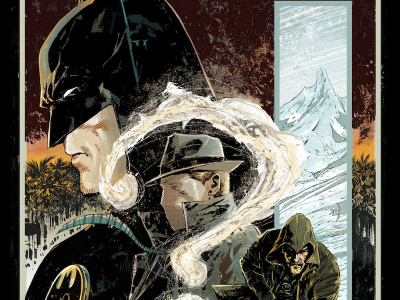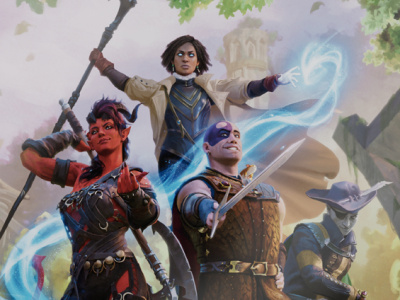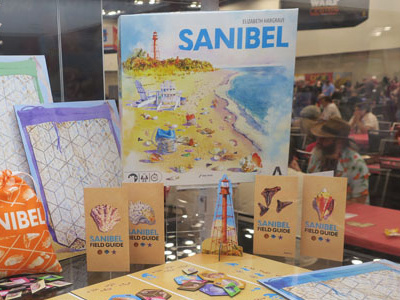Chuck Rozanski is usually the exception to any rule.
"Business 3x3" is meant to dispense anecdotal yet vital business information in bite-sized chunks. But as Rozanski, the founder of Mile High Comics, approaches 50 years in business, he’s got a lot to say. It’s all vital, but not necessarily bite-sized.
So we’re breaking format a tad with a nod to Esquire’s "What I’ve Learned." Let’s wind Chuck up and let him roll:
THE EARLIEST DAYS.
"I started selling comics when I was 13. I never wanted to do anything else. I started doing professional selling at antique fairs when I was 14, did my first national convention by myself in Oklahoma when I was 17. I opened my first store [in 1974] when I was 19, and I had four stores and found the Mile High Collection when I was 21. That’s my resume. I had a vision from very early in childhood that the comic collecting world would become prodigious at some point in time. That has pretty much been my focus my entire life. I’ve pretty much just followed my basic mantra, which is to sell comics solely as a means to buy more comics.
"My first great decision was to not take the safe route. I sold comics while in high school, and when I went to college I had a full-ride scholarship, academic and ROTC. I could have taken the safe route and continued my education in college, and then either went to work in corporate America, or I could have gone into the military with my ROTC background. But when other people were sticking with their safe jobs delivering mail or teaching, I gave it all up. I borrowed a 1963 Chevy and I walked away from my full-ride scholarship and I lived in my car for four months sleeping on top of my comics. I went from convention to convention around the country and built enough working capital to open my very first Mile High Comics store.
"To sleep in roadside parks and sneak into KoA campgrounds to take showers… it was probably the best decision of my entire life."
THE FAMOUS COLLECTION... AND WHAT HAPPENED TO IT.
In 1977, Rozanski hit the mother lode. Collector Edgar Church was 88 years old, and his family wanted to dispense with his comic collection. The collection was staggering: More than 18,000 Golden and Silver Age books, most still in a condition so pristine some have called them "glow-in-the-dark mint." Rozanski bought ’em all, and the books became comics’ first pedigree collection.
"I’m fairly well-known for being the discoverer of the Mile High Collection, and people often have asked me what happened to some of the key books. Well, I sold many of them in order to build up the company. But I also kept some for myself. Unfortunately, I had to sell some of those because I had someone who I trusted dearly who was my bookkeeper-slash-girl-Friday who was stealing from me. She opened the mail when it came in, she took care of the bills, and what I didn’t know was that for a period of six years, she was stealing. I eventually got her arrested and convicted, but in the course of time of waiting for that to happen, we kept having to sell more and more key books. We documented over $70,000 in losses for the district attorney’s office, and that’s in 1980s dollars, so you pretty much have to quadruple that for today. So it was a huge, huge theft.
"But what was more important was that I had to sell things like my Action Comics #1-10, my Marvel Mystery #1-#11. The Action Comics #1 is easily worth $5 million today. So, hmmmm. Not such a good deal.
"She was stealing cash out of our mail order receipts. How you can live with yourself when you’re doing something like that... I just don’t understand. It’s so immoral. I just don’t understand. But I got a new rule out of the experience: Never have the same people do your accounting and pay the bills. That’s the easiest way in the world for someone to rip you off. She simply just changed the books to cover up her stealing."
COMICS ARE GOOD. SO IS REAL ESTATE.
"The number one bit of advice I give to any comic retailer is ‘buy, don’t rent.’ One of the blessings I had a long time ago is that I walked into a deal where I could buy my 56th Ave. warehouse for $2000 down because the guy who had the building bought another building, and the bank required that he sell his first building to do that. They didn’t care to who or for how much. So he gave me the building for a $2000 check down. I ultimately sold that building for well over a million-dollar profit after occupying it for 26 years.
"At the same time, I just closed two of my smaller stores, and in each of those stores, I had paid over a million dollars in rent, and what I had at the end of 29 years was… nothing.
"In our business, the number one asset you can have is inexpensive space. Everybody thinks it’s all about the inventory, but it’s not. It’s about the space. ’Cause if you have the space, you can have vast amounts of inventory. But if you don’t have the space, it becomes a huge financial drain on you.
"I buy more storage lockers as the consequence of bad decisions from other retailers. Never rent. You’ve got to own your properties. You can get more stuff. But if you don’t have that real estate creating that nest egg for you, you will wind up at the end of the game with nothing.
"Many retailers, their exit plan is next month’s Diamond order. They don’t have anything else in the world. They’ve made no contingency for down the road. Real estate is your down-the-road contingency."
THE INS AND OUTS OF SAN DIEGO.
"Well, I have incredibly mixed feelings toward [San Diego] Comic-Con. Toward the end, the treatment we received was so far beyond shabby that it beggars the imagination. I’m going back there because I was asked to go back there, and now that I’ve been invited to be part of the Out in Comics panel, I feel like I actually have a reason for going and a contribution to make. But just being paraded around as one the guys who worked for 44 years to help keep this place going… yeah, you know, that really doesn’t do much for me.
"I went with huge reservations. But now that I’m attending the Out in Comics panel in drag as Bettie, now that makes a difference.
"The people of the city of San Diego, the entrepreneurs, the people in the Gaslamp have been ruthless. When last I was there, I had on omelet on a Tuesday for $11, and when I came back on Thursday, the exact same omelet was $19 because it was their special convention breakfast. No. That’s just bullshit. They’re just talking advantage of us."
EXPANSION IS NOT THE ANSWER.
Mile High Comics has always been centered in Colorado, but in the 1990s, Rozanski tried an expansion with stores in California. They ultimately failed. Mile High has had as many as eight stores at one time, but most recently, Rozanski consolidated his stores into one mega-store.
"All of us, to be in business, have to have an ego. And we’re all competitive. We stake out a territory, and try to keep that turf. But over-expansion, trying to do too many things for too many people… that was a mistake. I should have just stuck with buying more and more and more collections. I opened about 40 stores during my career, and how many do I still have? If I would have stuck to just one store and always strove to make it bigger and better—remember, always better, always new stuff to look at, changing it around, shaking it up—that would have been a much better plan for me than opening all those stores."
2019 IS 1974 AGAIN.
"The big topic of conversation we have these days is about life without new comics. Looking at the trend lines, the print runs declining… we just wonder when the point will come where critical mass is lost. I think that’s sort of the 800-pound gorilla that everyone has sitting on their shoulders that nobody talks about. Because nobody wants to be the first one to say, ‘Hey, this could all fall apart.’ When I bought Jason St., our giant, gigantic building, our plan right from the beginning was to turn it into a collectibles center that did not sell new comics. And I was beaten over the head by my staff to carry new books. And I guess on some level, I’m glad we did. But new comics in Jason St. are about 20, maybe 25 percent of our business. That’s up from about 10 percent last year, but only because we closed two smaller stores and a lot of those pull boxes pulled over to Jason.
"We run our business much more on the model that existed in 1974 when I opened my first store. We act as a secondary market for pop culture collectibles of all kinds—comic books, action figures, statues, trade paperbacks, posters, and so on. We seek to be the secondary market for pretty much anything you can name in the pop culture realm. That’s proved to be extremely successful for us. Our sales last month were up 51% month to month. I would question how many retailers can look at their business right now and say, ‘Oh, we’re up 50%!’ But that’s because everyone is clinging to a dead model.
"They are all trying to be Diamond Previews’ catalog outlet store. And they are taking the lazy man’s version of being a comic dealer, which is to just sit there and turn in order forms that other people have turned in to you.
"We’re selling waaaay more in terms of backstock than we are in new comics in the store. And the secondary market for toys, POP! figures, whatever, as long as you buy and have the space to display it—again, it comes back to space!—what I have proven with Jason St. is that you can be in a God-awful industrial area in the middle of nowhere and still become a destination for an entire city if you have enough cool shit.
"But the key is not to be just out there working… for… Diamond! I mean, if you’re working for Diamond all day long… my Diamond invoice used to be as high as $60,000 a week. Screeeeeeeeew that! That was moronic. And I am proud—proud!—to say that I have dropped that enormously and I’m working to drop that even more because I don’t want to be in that business. Now when you’re buying a $5 comic book and your cost is $2 and change, it’s worth 25 cents if you don’t sell it in 30 days. Your risk and your loss are enormous. We have to get away from this model.
"And I helped pioneer this model back when the direct market was first getting going, I’m the one who got Marvel to open their distribution back in 1979, 1980. All of that was premised on comic books that were 40 and 50 cents cover price, with a residual value of a buck as a back issue. There really was no risk if you didn’t sell them. No matter what, you’d make your money. Now today, back issues still sell for a buck, but your wholesale cost is more than double what your residual value is. This is idiotic.
"Almost every part of this economic model right now is bad. I am so glad that I put away 10 million back issues… and I don’t have to worry about it any more. I am really a hoarder. My greatest goal every day is to go to bed with more stuff that when I woke up that day. And it almost always works out. We acquire constantly. At Jason St., it’s not uncommon for us to acquire 15 collections in a day. Okay? Whether I sell them or not is highly irrelevant to me. I have to sell enough to cover the cost, I guess, but with 10 million books in stock, it’s not like I’m not going to have something to sell tomorrow. I could sell 1000 comics a day for 27 years and still have a lot to sell."
2019 IS 1974. JUST DON’T STOP IN 1993.
"My encouragement to everyone is to be the anti-1993 guy. In 1993, there was a self-appointed consultant going around the comics world telling everyone that they should dump their back-issue bins, that they should just focus on carrying the new, the sexy, and the hot. Just concentrate on turnover, turnover, turnover. Well, you do get some winners with that. But at the end of the day, you don’t have anything left. The goal of capitalism is to create capital, to create something that will then sustain you in the future. I think people really need to take a look at the secondary market. There have been billions and billions of dollars of Star Wars, Harry Potter, Game of Thrones and whatever merchandise sold. It’s out there. And people move, they get divorced, they die, they downsize their apartments, whatever. They need to have a mechanism to sell this stuff. Stop giving all your money to Diamond. Start getting into collectibles where your margins are better.”
THE FUTURE.
"I don’t sugar-coat things. That’s not my way of approaching the world. But next February 6 will be 50 years since I first set up my first public booth to sell comics in Colorado Springs. 50 years. And I feel just as good about the next 50 years as I do the last. I think this is a fun business. I am really blessed to be in it. I just think that everyone needs to look at this shifting landscape and realize that sometimes you have to adapt. You have to be aware that maybe what worked yesterday might not work tomorrow."
Click Gallery below for full-size images!



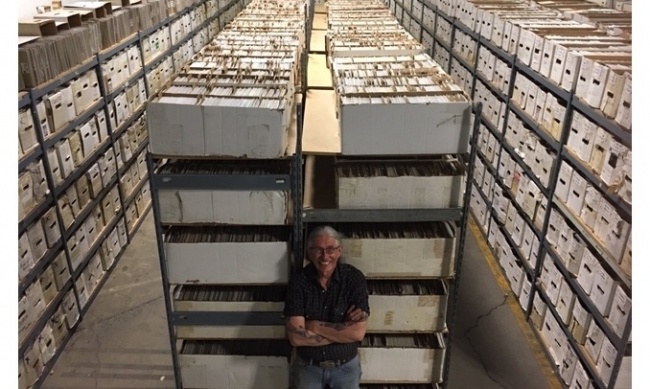
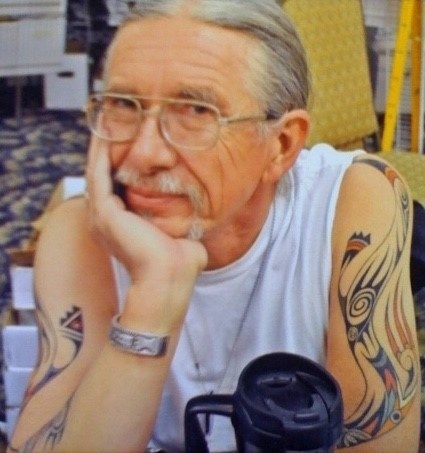
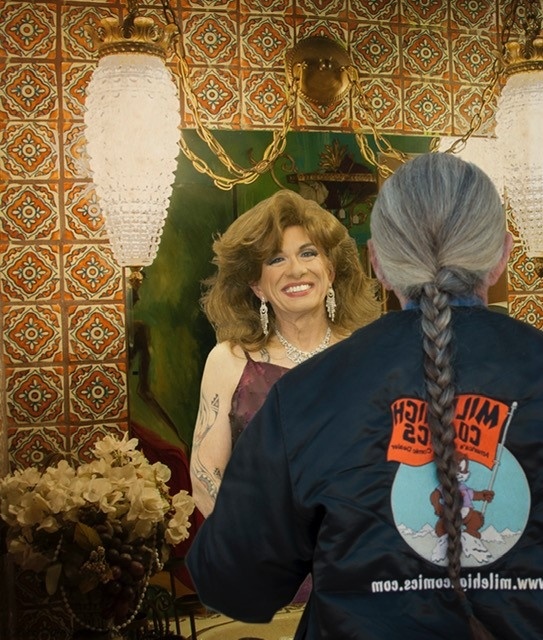
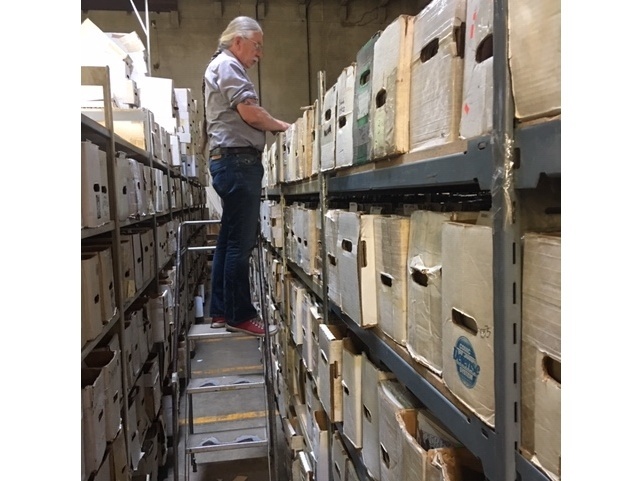
 View Gallery: 6 Images
View Gallery: 6 Images 